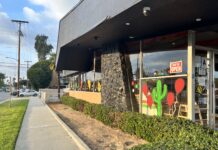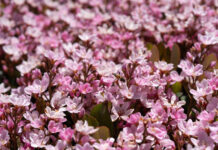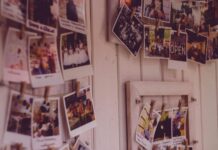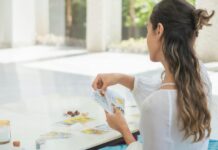 On April 3, UC Riverside welcomed Anna Lee Fisher, one of the first female astronauts, who visited campus to speak to students about her career with NASA. After years of extensive schooling, working on exciting projects with NASA, and eventually venturing into space, Fisher compiled the various lessons she learned and offered them to students and faculty in attendance. About 100 students gathered at the event organized by the Women’s Resource Center as a part of the Leadership Community for Women Initiative. Women’s Resource Center’s Director Adrienne Sims explained that the initiative addresses the issue that women are the most disparaged group in the world. The initiative aims to offer hope to young women by exposing them to female role models such as Fisher.
On April 3, UC Riverside welcomed Anna Lee Fisher, one of the first female astronauts, who visited campus to speak to students about her career with NASA. After years of extensive schooling, working on exciting projects with NASA, and eventually venturing into space, Fisher compiled the various lessons she learned and offered them to students and faculty in attendance. About 100 students gathered at the event organized by the Women’s Resource Center as a part of the Leadership Community for Women Initiative. Women’s Resource Center’s Director Adrienne Sims explained that the initiative addresses the issue that women are the most disparaged group in the world. The initiative aims to offer hope to young women by exposing them to female role models such as Fisher.
The event began with an introduction by Richard Olds, the Vice Chancellor of Health Affairs and Dean of the UCR School of Medicine. Olds spoke of Fisher’s impressive degrees from UCLA: a Bachelors and Masters in Chemistry, as well as a Doctor of Medicine with a specialization in Emergency Medicine. During the time she was receiving her degrees, medicine was a male dominated profession and he praised her perseverance. After acknowledgements and remarks Marylynn Yates, Barbara Purvis and Adrienne Sims, Anna Fisher began to share her incredible life experiences.
Fisher had never dreamed that she would one day be an astronaut. It was only after she heard of Alan Shepard, the first American in space, that she became fascinated by the possibility. Fate would have it when, upon completing medical school, a friend of Fisher’s serendipitously notified her of a position within NASA which would launch her career in a completely new direction: up.
Instead of working on human beings, her subjects shifted to satellites and space shuttles. As Mission Specialist, one of her first missions was working on a space salvage mission, during which she was able to retrieve two satellites.
She gave audience members insight into life at the Johnson Space Center, which felt to her much like a college campus. There she spent a strenuous year in training. One of the many things she did there was spend several hundred hours inside space simulators, which were remarkably similar to an actual spacecraft. Fisher shared pictures of the patches she designed for the flight suits, her crew and the shuttle itself. A week before the launch, the team was obligated to undergo full quarantine.
According to Fisher, taking off was akin to sitting in a chair that had its back to the floor for three hours. She described the launch as, “bumpy with lots of noise and vibration in the cockpit, but once the Earth’s atmosphere had been cleared, was just smooth acceleration.”
Considering the shuttle’s acceleration from zero to 17,500 miles per hour within eight minutes, a slightly bumpy ride was hardly surprising. But that was only the beginning of the odd physical effects of space travel. Fisher explained how odd weightlessness felt: instead of one’s blood being drawn downwards due to gravity, it becomes more evenly distributed in one’s body and tends to fill out one’s face. A fact about space that, she joked, was good for minimizing wrinkles.
During Fisher’s first night in space, she had trouble falling asleep. Not only was she farther from home than she had ever been, she also had to deal with the irritating consequences of having no gravity. She was floating around so much that she could not fall asleep. In order to fix this, she hooked two sleeping bags together to form a make-shift hammock, and then anchored it to the shuttle’s walls. By tethering her sleeping bags, she was able to avoid floating around the room. During her presentation, she shared a beautiful photograph taken of the Himalayan Mountains from inside the Shuttle.
After concluding her description of her first mission, she told attendees what NASA is currently working on and where the future of NASA is headed. She explained that there are now space stations that exist to serve as a long term stage for scientists to conduct research and experiments. At this time, they are working on making the space station more sustainable. They are even capable of recycling urine. NASA is also attempting to develop a shuttle that can go beyond Earth’s orbit and ultimately reach Mars.
Fisher shared the possibility of a future where shuttle rides can be tourist attractions or perhaps there could even be commercial structures for universities, in which a school could have a laboratory in space. She also shared, idealistically, that a way to resolve problems between countries could be to have them work together in an international effort to advance space exploration. Fisher’s talk exemplified everything the Leadership Community for Women Initiative hopes to bring to students. In a time where there were hardly any women in the field of medicine, Fisher excelled. But even that accomplishment was not enough, Fisher became one of the few females to brave the greatest unknown, the mysterious uncharted frontier: outer space.








